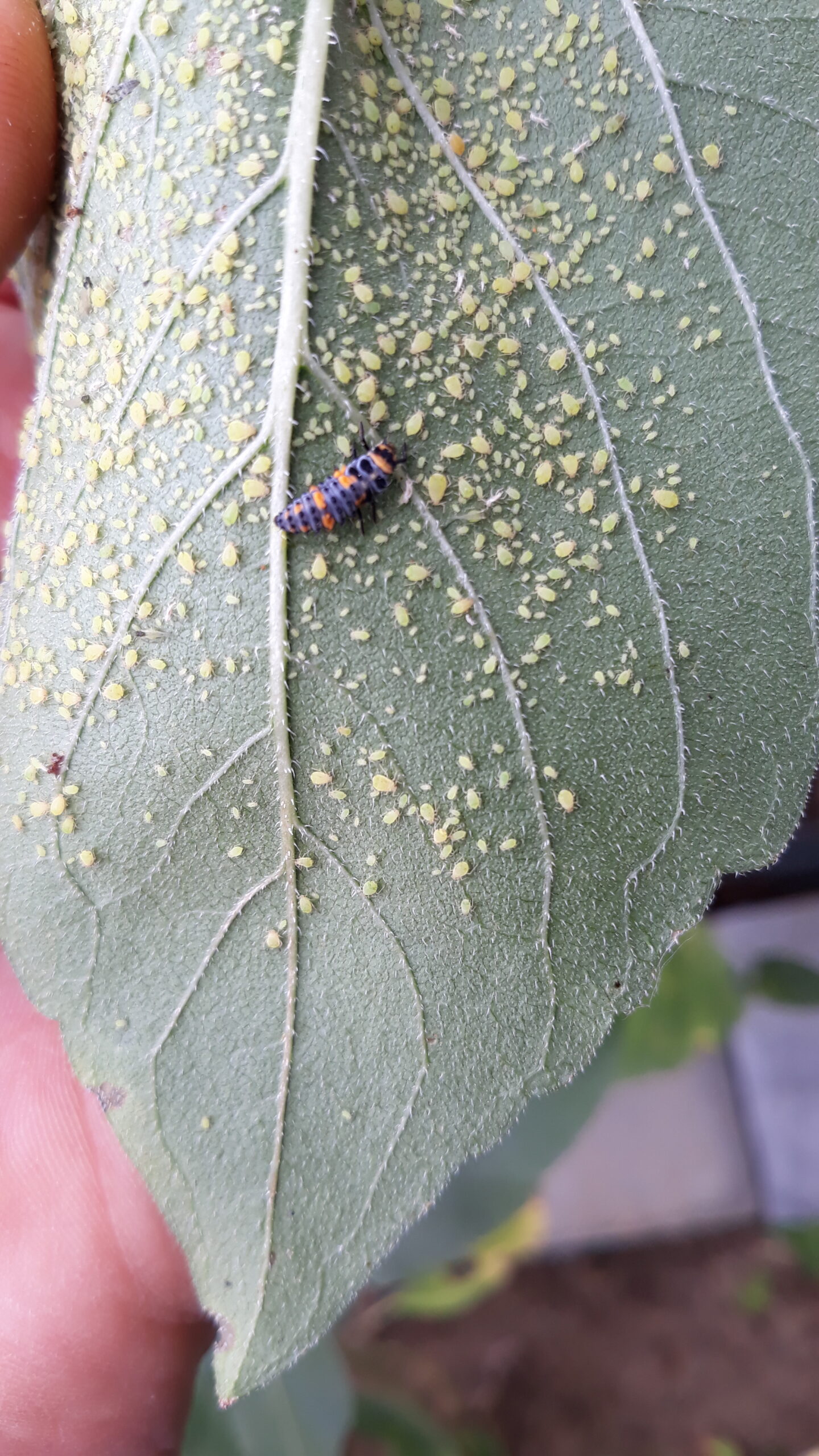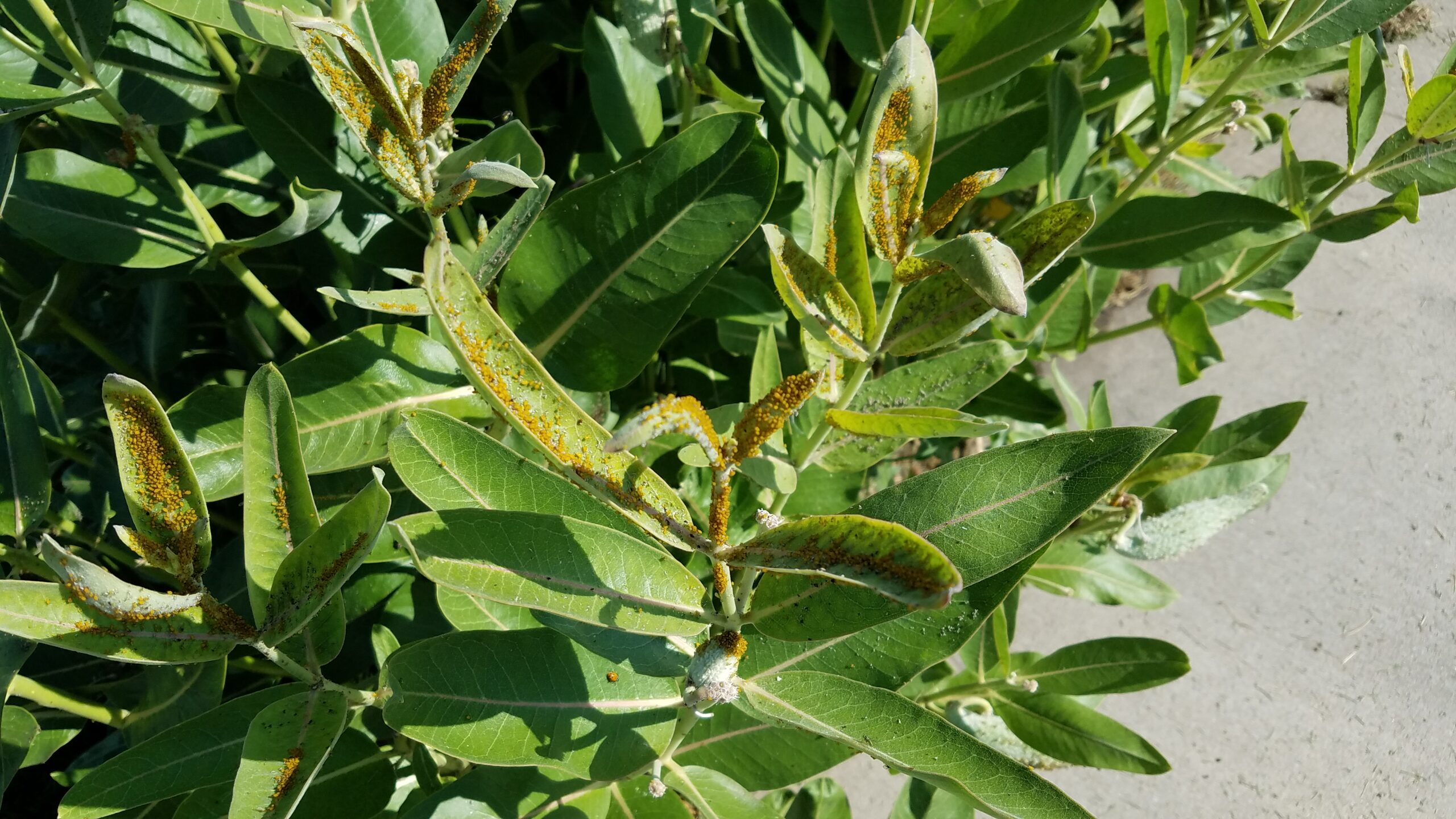


What are aphids?
Aphids can be serious pests in Colorado. The small, pear-shaped insects vary in color from green to orange, red, brown or gray. These insects damage plants by sucking the plant juices. When abundant, aphids remove large quantities of sap, reducing the growth and vigor of the plant.
What are signs of aphids?
One can look for certain signs on a plant to verify the presence of aphids. Leaf curling, the presence of ants or the excretion of a sweet, honeydew-like substance may all be an indication of an aphid problem.
What can I use to prevent aphids?
Ladybugs, green lacewings, syrphid flies and parasitic wasps are some of the aphids’ natural enemies and will help control them. Most plants will tolerate the use of insecticidal soaps. Test spray a small portion of the plant. Wait a few days and see if there is sensitivity to the foliage. If no symptoms appear then spray the entire foliage. High water pressure may also wash away aphids and remove sticky honeydew.
When aphids can’t be controlled by these natural methods, insecticides containing the active ingredients acephate, bifenthrin, and imidacloprid are effective. Be sure to follow all label directions when using insecticides.
For more information, see the following Colorado State University Extension fact sheet(s).
- Backyard Orchard: Apples and Pears
- Backyard Orchard: Stone Fruits
- Recognizing Tomato Problems
- Aphids on Shade Trees and Ornamentals
- Aphids on Shade Trees and Ornamentals
- Aphids in Alfalfa
- Cooley Spruce Galls
- Insect Control: Soaps and Detergents
- Beneficial Insects and Other Arthropods
- Insect and Mite Galls
- Insect Control: Horticultural Oils
- Strawberries for the Home garden
- Currants, Gooseberries and Jostaberries
- Cucumbers, Pumpkins, Squash, and Melons



